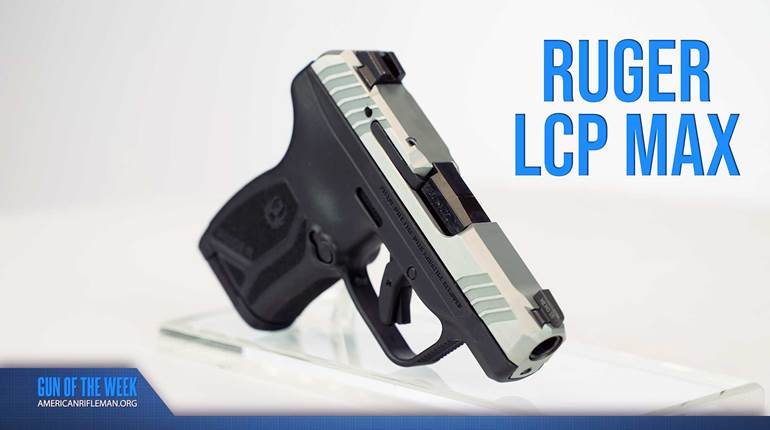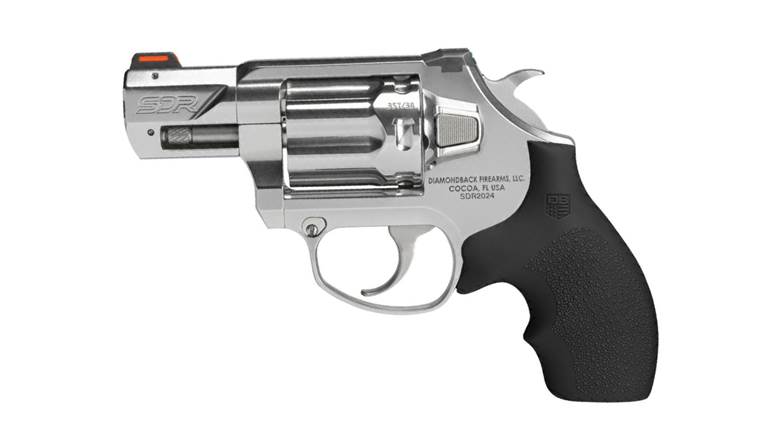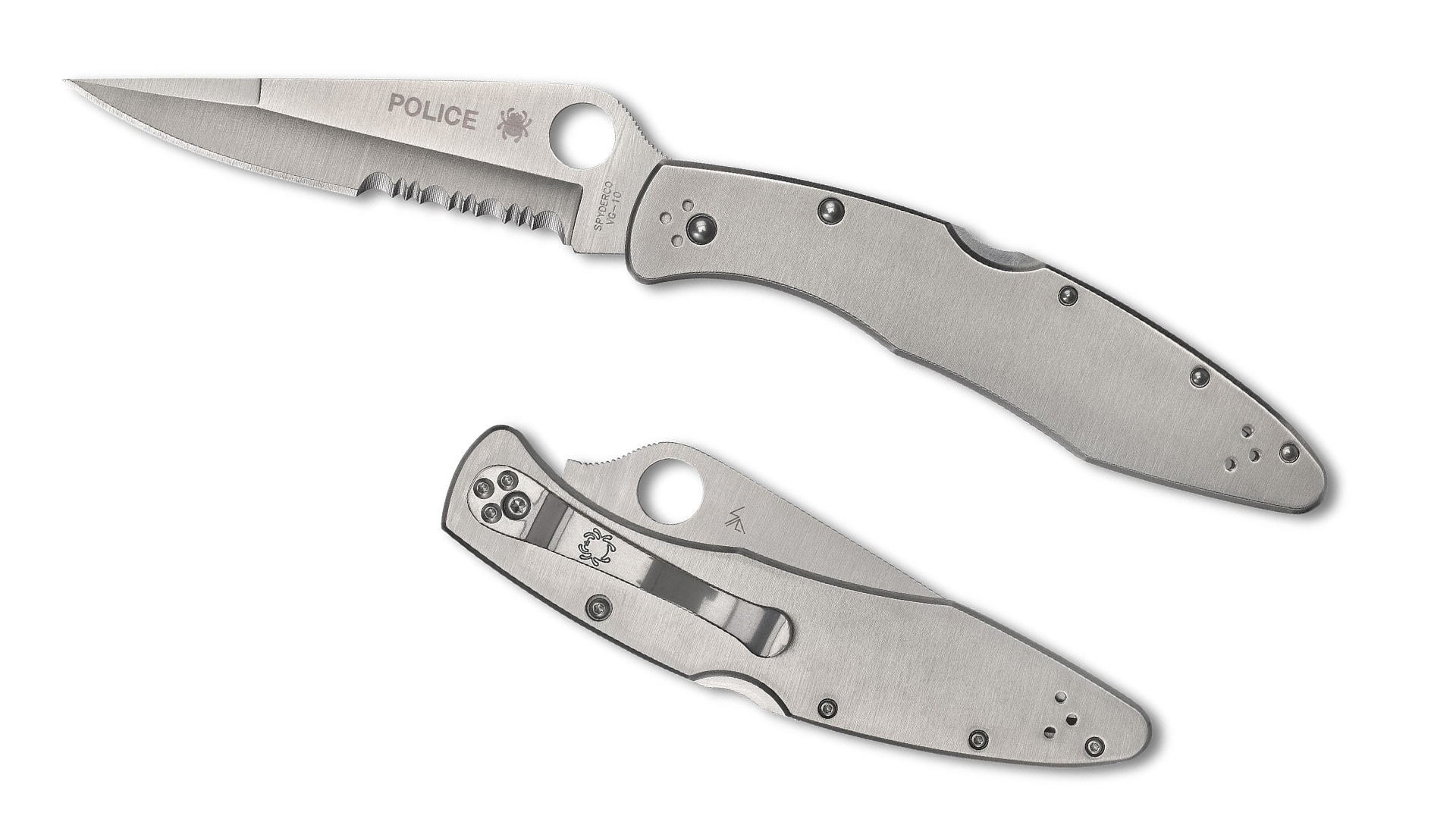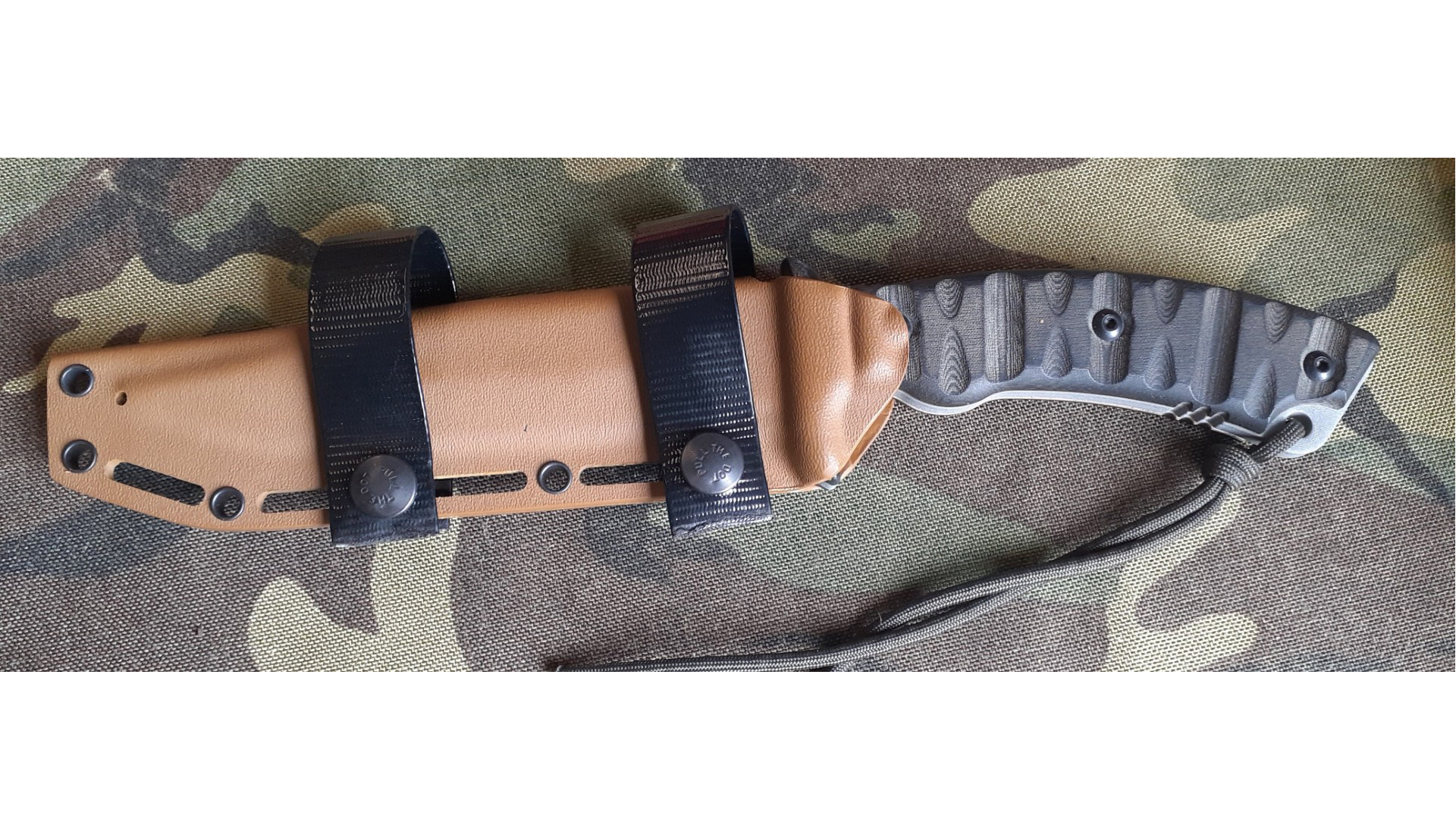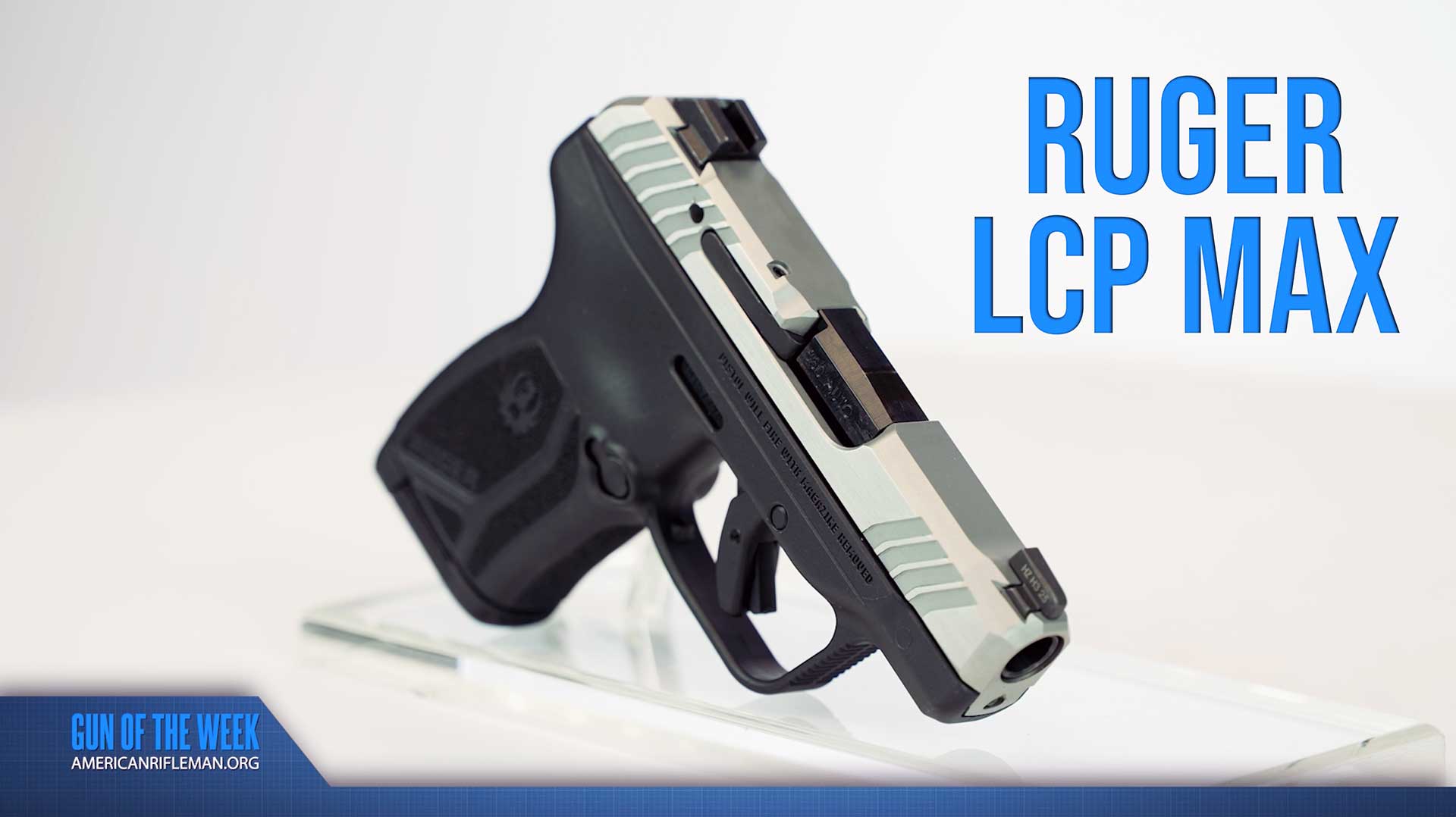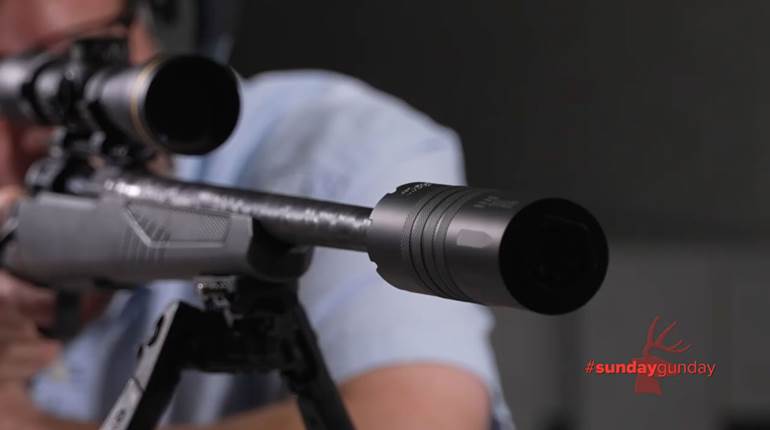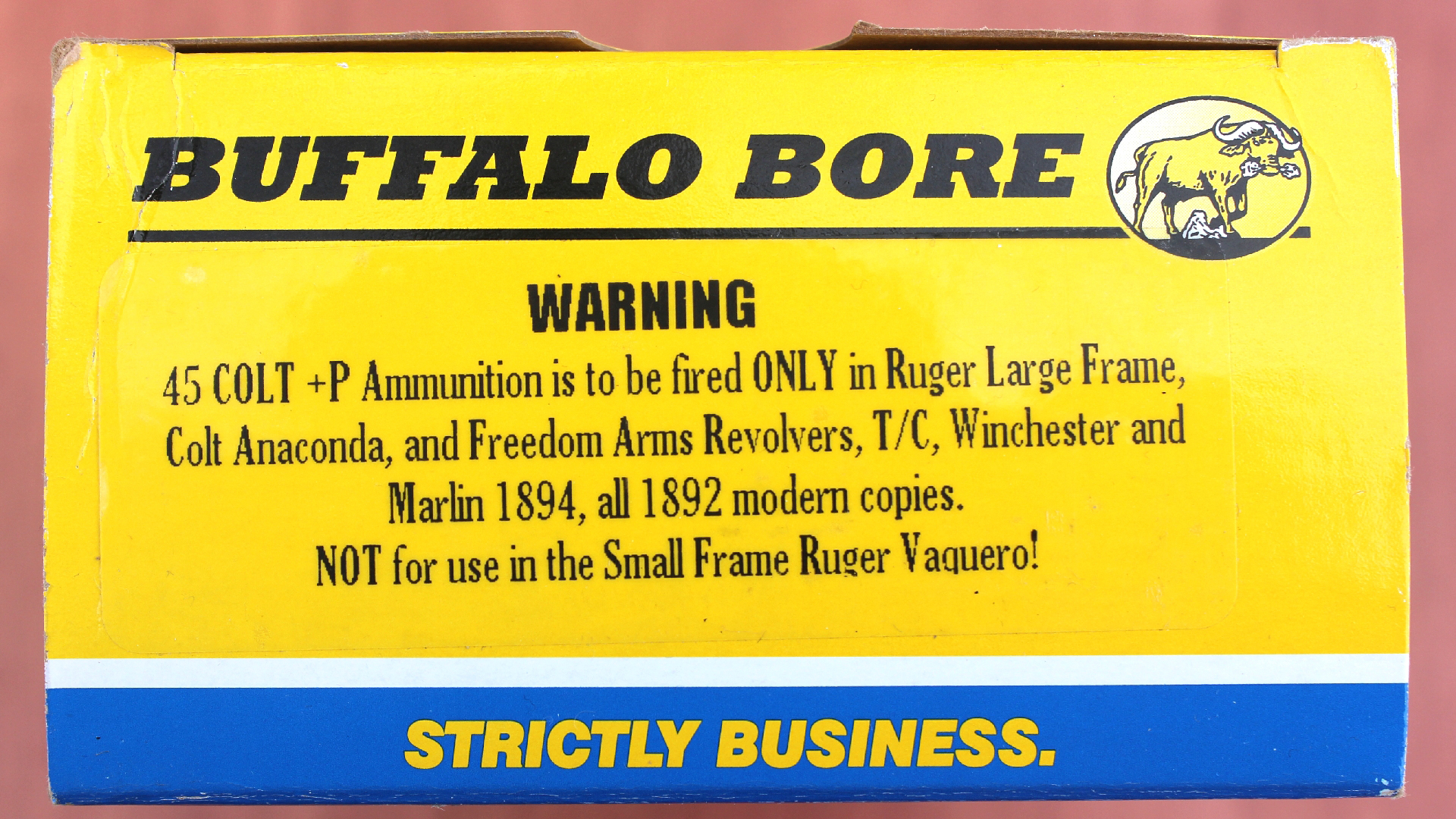
It is safe to say that the advent of smokeless gunpowder has been especially effective at boosting the performance of yesteryear’s cartridges. And the continued evolution of smokeless powder appears to have sparked ballistic improvements in a variety of handgun cartridges, especially big-bore types such as the .45 Colt. These advanced powders generate higher velocity than ever before thought possible, which translates to greater levels of impact energy over its blackpowder counterparts. But with these higher velocities comes increased operational pressures. And if the level of pressure produced by the cartridge exceeds that of the firearm’s allowable threshold, then there's a serious risk of catastrophic failure—the gun may blow apart.
One method of avoiding ammunition-related failures has been to create new cartridges based on older ones. Quite simply, the “parent” case is often enlarged a bit to form the new cartridge so that the updated and more powerful round won't fit into older guns. Now the longer cartridges, sometimes referred to as a magnum round, can have its pressure levels ramped up for guns constructed specifically for them. As an added benefit, the shorter parent cartridges can be chambered and fired in the magnum chamber.
 Standard-velocity .45 Colt loads, like this one, operate at lower pressure levels, which are safe to use in vintage and small-frame revolvers.
Standard-velocity .45 Colt loads, like this one, operate at lower pressure levels, which are safe to use in vintage and small-frame revolvers.
Here are a few familiar parent- and child-cartridge pairings along with each round's maximum pressure-level shown in pounds per square inch (PSI):
| Cartridge | Maximum PSI |
| .32 H&R Mag. | 21,000 |
| .327 Fed. Mag. | 45,000 |
| .38 Spl. | 17,500 |
| .357 Mag. | 35,000 |
| .44 Spl. | 15,500 |
| .44 Mag. | 36,000 |
| .45 Colt | 14,000 |
| .454 Casull | 65,000 |
As you can see from the chart above, the magnum child cartridges operate at significantly higher-pressure levels. More than double the pressure is typical, but the .454 Casull can be loaded to more than four times the maximum pressure of its parent round, the venerable .45 Colt.
But ammunition manufacturers and especially folks who reload their own cartridges are rarely satisfied with staying inside the recommended pressure levels of the older parent cartridges. The differences in performance levels of parent and child leave a lot of room for tinkering with the former. Thanks to gunpowder evolution, bullet velocity can be increased without pushing chamber-pressure levels to the next cartridge size. It's this area of cartridge-pressure tinkering that eventually led to what is referred to as +P ammunition.
 Hard-cast lead bullets with flat points crush vital game animal tissues while maintaining their shape to provide deep penetration.
Hard-cast lead bullets with flat points crush vital game animal tissues while maintaining their shape to provide deep penetration.
The +P rating is an official designation issued by the Sporting Arms and Ammunition Manufacturers' Institute (SAAMI) that indicates a given cartridge will operate within a higher-than-standard pressure range. This above-average +P notation is commonly associated with the older defensive-handgun cartridges, such as .38 Spl., 9 mm Luger, and .45 ACP, signifying a boost in ballistic performance.
It is important to note that the added pressure may be much too much for older guns to handle. And those that can take excessive pressure will see increased wear as a result. But even though the +P demarcation is official, the range of operational pressures under this heading are not spelled clearly for all loads in this category. Individuals and ammunition companies have a broad range of discretion as to whether their +P loads increase operating pressures a little or a lot for some rounds.
 This heavy-bullet +P cartridge loaded to a more moderate 1,200 f.p.s. proved to be one of the more comfortable rounds to shoot.
This heavy-bullet +P cartridge loaded to a more moderate 1,200 f.p.s. proved to be one of the more comfortable rounds to shoot.
This brings us to the topic of this conversation, namely, the sometimes-misunderstood .45 Colt +P cartridge. Because the +P rating is so commonly associated with defensive pistol chamberings, the general expectation is that the pressure increase will be relatively modest. A .38 Spl. +P load may generate a maximum pressure of 20,000 PSI instead of the standard rating of 17,500 PSI. It’s not uncommon for .38 Spl. revolvers rated for these higher pressure loads to have +P marked on the barrel to help customers avoid any confusion.
It is the .45 Colt +P cartridges that are a different story. Because of their relatively large bullets and capacious cartridge cases, folks who have worked to improve .45 Colt performance drove straight past a bit more speed for self-defense and went right to magnum-revolver levels of power. The goal was to produce a +P cartridge capable of providing performance on par with, or better than, typical .44 Mag. loads. This makes a .45 Colt-chambered revolver a more capable option for hunting or defense against dangerous game.
 This extra-long .405-grain Garrett Hammerhead bullet won’t fit into some incompatible firearms, but it can still fit into some.
This extra-long .405-grain Garrett Hammerhead bullet won’t fit into some incompatible firearms, but it can still fit into some.
But with added bullet velocity comes with greater cartridge pressure. Launching 200-grain to 400-grain .45-cal. bullets at significantly higher velocities results in a significant increase of pressure. Factory-loaded .45 Colt +P cartridges are not going to be as “hot” as a .454 Casull. But .45 Colt +P load operating at or above .44 Mag. pressures (~36,000 PSI) can fit into vintage single-action wheelguns or small-frame double-action revolvers designed for standard .45 Colt (~14,000 PSI) ammunition. In order to avoid the very real danger of serious injury or death due to the gun detonating like a hand grenade, it’s important to know what guns can safely handle +P loads.
 The high-pressure .454 Casull cartridge is a potent round that can generate more than four times the pressure of a standard .45 Colt load.
The high-pressure .454 Casull cartridge is a potent round that can generate more than four times the pressure of a standard .45 Colt load.
Unfortunately, gun manufacturers rarely clarify which of their .45 Colt models are safe to use with +P cartridges. This is because the vast majority of their revolvers are purchased to shoot standard-pressure loads. Those guns that can indeed handle the pressure are not described in the safety manual or stamped ‘.45 Colt +P.’ This is most likely due to the fact that folks who are looking for a revolver with more punch will typically turn to more familiar options, such as .44 Mag., .454 Casull or .460 S&W. So the .45 Colt +P continues to be a niche hunting round that is generally overlooked by .45 Colt devotees who stick with standard-pressure loads for range use or single-action shooting competitions.
Cartridge-head stamping is not all that helpful either. While you can find +P markings on defensive cartridges, like .38 Spl. +P and 9 mm +P, the .45 Colt +P loads I worked with were simply stamped “.45 Colt.” Since neither the guns nor cartridge cases are marked +P, ammunition manufacturers have taken it upon themselves to provide explicit warnings to their customers. The companies provide them on the ammunition boxes and their product websites. Unfortunately, there is no official, industry-approved list of which .45 Colt handguns and rifles can or cannot safely fire +P rated ammunition. This means it’s up to the consumer to do their homework.
 It’s up to shooting sports enthusiasts to do the research necessary to verify if their .45-cal. handgun or rifle can safely fire +P ammunition.
It’s up to shooting sports enthusiasts to do the research necessary to verify if their .45-cal. handgun or rifle can safely fire +P ammunition.
Do not shoot any high-pressure ammunition in your gun until you have verified that it’s safe to do so. Consult your owner’s manual, contact the ammunition provider and call the firearm manufacturer. Keep looking until you get a clear answer. If, after conducting this research, you still don’t have a firm ‘yes’ or ‘no’ about the gun in question, go with the default assumption that it is not safe to use +P loads and avoid them all together.
After determining that most commercial .45 Colt +P loads currently on the market are intended for handgun hunting, I was curious to see how they would perform when compared to standard-pressure .45 Colt and the extra-spicy .454 Casull. But leveling the playing field for a cross-caliber performance comparison can be a bit tricky. The available firearms and factory-loaded ammunition options can vary so greatly that the performance results can end up being more of an apples-to-oranges than an apples-to-apples comparison.
 This version of the Ruger Super Redhawk can safely fire .454 Casull, .45 Colt +P and .45 Colt. It can also fire .45 ACP if the cylinder is milled to accept moon clips.
This version of the Ruger Super Redhawk can safely fire .454 Casull, .45 Colt +P and .45 Colt. It can also fire .45 ACP if the cylinder is milled to accept moon clips.
In this case, a Ruger Super Redhawk proved to be an ideal test platform. Back in 1997, it was the first commercially available double-action revolver chambered for .454 Casull. This means it can safely chamber and fire .45 Colt and .45 Colt +P cartridges. It’s also a popular option for handgun hunting. The custom Super Redhawk I used here was modified by Cylinder & Slide, where the barrel was shortened to 6" with gas ports starting at 4.625" down the barrel to help with shootability. This barrel configuration gives the gun an unloaded weight of 3 lbs., 3.1 ozs.
During my pre-test research, I discovered that Buffalo Bore Ammunition offers its Heavy .45 Colt +P Outdoorsman load topped with a L.B.T. 325-grain lead flat-nose bullet that travels 1,325 f.p.s. This type of bullet is favored for its terminal performance properties, which make it an ideal fit for this cartridge category. But the company also offers the same 325-grain lead bullet in .454 Casull that launches at a listed muzzle speed of 1,525 f.p.s. These were the most similar cartridges in this caliber that I could find, providing a useful shooting experience so that I could examine felt recoil and compare performance.
 The .405-grain Garrett Hammerhead .45 Colt +P load comes within a hair’s breadth of the top of the Ruger’s cylinder.
The .405-grain Garrett Hammerhead .45 Colt +P load comes within a hair’s breadth of the top of the Ruger’s cylinder.
The other three test loads selected also had flat-point bullets made of lead. DoubleTap Ammunition offers a standard-pressure .45 Colt load topped with a 255-grain semi-wadcutter listed at 920 f.p.s. and a 360-grain hard-cast solid .45 Colt +P launching at about 1,200 f.p.s. To round out the test, I set out to try something somewhat exotic. I went with Garrett Cartridges’ Super Hard Cast Hammerhead, which launches a heavy-duty 405-grain monolithic bullet at a listed velocity of 1,250 fp.s. when fired from a 7.5" revolver barrel.
As expected, the .454 Casull load was a chore to work with at the range. Respecting the cartridge's performance and liking its exceptionally stout levels of felt recoil with heavy bullets are two different things. This test re-affirmed some of my previous experiences when working with big-bore handguns that have gas ports cut into the barrels to reduce muzzle rise. With low-pressure loads, the ports make some difference, but it’s not all that much since a beefy gun, like the Super Redhawk, is one that soaks up recoil effectively. Barrel ports with higher-pressure loads do help keep the muzzle from lifting up, but the recoil impulse has to go somewhere, so the gun tends to be driven straight back into the shooting hand.
 The .45 Colt +P loads struck a just-right balance of performance and felt recoil.
The .45 Colt +P loads struck a just-right balance of performance and felt recoil.
However, the barrel porting seemed to operate at just-right levels with the .45 Colt +P loads. Much like .357 Mag. and .44 Mag. handguns, the porting vents enough upward pressure to curtail muzzle rise without driving the gun like a fastball into the shooting hand. Felt recoil is still stout but not painfully so. The result is more of a solid shove instead of an uncomfortable blow to the hand. It made the gun much more enjoyable to work with for longer periods of time.
Now let's take a look at the ballistic results using a custom Ruger Super Redhawk with a 6” barrel fired from a benchrest position. Five-shot groups were fired at 25 yards with bullet velocity checked for 10 rounds each using a LabRadar chronograph with a 12" offset from the muzzle:

Although this was a fairly limited test of .45 Colt +P handgun hunting ammunition, it provided some illuminating information about this sometimes misunderstood high-pressure revolver cartridge. For .45-cal. guns that are strong enough to handle it, this ammunition is an ideal way to boost performance for use in the field. I suspect that there are a good number of .454 Casull revolvers out there, purchased at the height of the cartridge's popularity, currently gathering dust due to the formidable levels of felt recoil that particular cartridge produces. The .45 Colt +P can provide effective levels of game-getting performance at more tolerable recoil levels. Just do yourself a favor, and don’t try to shoot it out of an authentic Colt Single Action Army revolver.












